1.
Introduction
Regarding the existence of monotonic solutions of differential equations, important results were obtained by Chu [1], Aslanov [2], Ertem and Zafer [3], Yin [4], Li and Fan [5], Rovder [6], Tóthová and Palumbíny [7], Rovderová [8], Iseki [9], Demidovich [10], Sanhan et al. [11], Branga and Olaru [12].
The purpose of this article is to study the existence and uniqueness of monotonic and positive solutions for systems of first order nonlinear ordinary differential equations on the positive real axis (defined over an unbounded interval). To achieve this goal we will base our research on the theory of gauge spaces introduced by Dugundji [13], which proved that any separating family of pseudometrics on a nonempty set induces a Hausdorff uniform structure on that set and conversely, any Hausdorff uniform structure on a nonempty set is generated by a separating family of pseudometrics, this allowing us to identify the gauge spaces with Hausdorff uniform spaces. We costruct three families of pseudometrics and the related gauge spaces, showing that the problem of solving systems of first order nonlinear ordinary differential equations on the positive real axis can be reduced to finding the fixed points of an operator which acts on these gauge spaces. Further, using the fixed point results obtained by Colojoara [14] and Gheorghiu [15] in the case of complete gauge spaces, respectively by Knill [16] and Tarafdar [17] for Hausdorff uniform spaces, we proved that under certain conditions the considered operator has a unique fixed point and consequently the system of first order nonlinear ordinary differential equations, with initial condition, has a unique solution on the positive real axis and this solution is monotonic and positive. Also, we explored some sufficient conditions for fulfilling the hypotheses of the main results obtained in the paper. Moreover, an example was given to illustrate the theoretical results.
2.
Materials and methods
In the following, we denote by R+ the real interval [0,∞).
We consider a system of first order nonlinear ordinary differential equations:
where x:R+→Rn, x=(xi)i=¯1,n, f:R+×Rn→Rn, f=(fi)i=¯1,n.
Definition 2.1. [18] Let us consider I⊆R+ an interval. We say that the vector functions x,y:R+→Rn, x=(xi)i=¯1,n, y=(yi)i=¯1,n, satisfies the condition x(t)≤y(t) on I, if xi(t)≤yi(t), i=¯1,n, on I.
Definition 2.2. [18] A solution function x:R+→Rn, x=(xi)i=¯1,n, of the system of first order nonlinear ordinary differential equations (2.1), is called monotonic for t→∞, if there is a number T≥0 such that each function xi, i=¯1,n, is monotonic on [T,∞).
Theorem 2.1. [18] Let us consider a,b∈R, a<b, and g:[a,b]→R an integrable function on [a,b]. We define the function G:[a,b]→R, G(t)=∫tag(s)ds. Then, the following statements are valid:
(i) G is continuous on [a,b];
(ii) If g is continuous on [a,b], then G is differentiable on [a,b] and G′(t)=g(t) for all t∈[a,b].
Definition 2.3. [13] Let X be a nonempty set. A pseudometric (or gauge) on X is a mapping p:X×X→R+ which fulfills the following conditions:
1) if x∈X, then p(x,x)=0;
2) if x,y∈X, then p(x,y)=p(y,x);
3) if x,y,z∈X, then p(x,z)≤p(x,y)+p(y,z).
Definition 2.4. [13] Let X be a nonempty set. We say that:
(i) A gauge structure on X is a family P=(pk)k∈I of pseudometrics on X;
(ii) A separating gauge structure P=(pk)k∈I on X is a gauge structure on X which satisfies the condition: for every pair of elements x,y∈X, with x≠y, there exists k∈I such that pk(x,y)≠0;
(iii) A gauge space is a pair (X,P) of a set X and a separating gauge structure P on X.
Definition 2.5. [13] Let (X,P) be a gauge space, where P=(pk)k∈I. We say that:
(i) A sequence (xn)n∈N⊂X converges to an element x∈X if for every ε>0 and k∈I there exists a number n(ε,k)∈N such that for all n≥n(ε,k) we have pk(xn,x)<ε;
(ii) A sequence (xn)n∈N⊂X is called a Cauchy sequence if for every ε>0 and k∈I there exists a number n(ε,k)∈N such that for all n≥n(ε,k) and p∈N we have pk(xn,xn+p)<ε;
(iii) A gauge space (X,P) is named sequentially complete if it satisfies the condition: any Cauchy sequence of elements in X is convergent in X.
Theorem 2.2. [14,15] If (X,P) is a sequentially complete gauge space, where P=(pk)k∈I, T:X→X is a self-mapping and for every k∈I there exists αk∈(0,1) such that
then T has a unique fixed point on X.
Definition 2.6. [19] Let X be a nonempty set and (Y,ρ) a metric space. We say that:
(i) A sequence of functions fn:X→Y, n∈N, is called uniformly convergent on X if: there exists a function f:X→Y with the property that for every ε>0 there is a number n(ε)∈N such that for all n≥n(ε) we have ρ(fn(x),f(x))<ε for all x∈X;
(ii) A sequence of functions fn:X→Y, n∈N, is named a uniformly Cauchy sequence if: for every ε>0 there is a number n(ε)∈N such that for all n≥n(ε) and p∈N we have ρ(fn(x),fn+p(x))<ε for all x∈X.
Theorem 2.3. [19] Let X be a nonempty set and (Y,ρ) a metric space. Then the following affirmations are valid:
(i) If fn:X→Y, n∈N, is a uniformly convergent sequence on X to a function f:X→Y, then fn, n∈N, is a uniformly Cauchy sequence;
(ii) If fn:X→Y, n∈N, is a uniformly Cauchy sequence and (Y,ρ) is complete, then fn, n∈N, is a uniformly convergent sequence on X to a function f:X→Y.
Theorem 2.4. [19] Let (X,τ) be a topological space, (Y,ρ) a complete metric space and fn:X→Y, n∈N, a uniformly convergent sequence on X to a function f:X→Y. If every function fn, n∈N, is continuous on X, then f is continuous on X.
Theorem 2.5. [19] Let (X,d) be a metric space, A a compact subset of X and f:A→R a continuous function. Then f is bounded on A and there exists t_,¯t∈A such that f(t_)=inft∈Af(t) and f(¯t)=supt∈Af(t) (f attains its infimum and supremum in A).
3.
Results
In the following we consider the spaces Rn={x=(x1,...,xn) | xi∈R, i=¯1,n} and C(R+,Rn)={x:R+→Rn | x is continuous on R+}.
Lemma 3.1. The following properties are valid:
(i) (Rn,‖⋅‖2) is a complete normed linear space, where ‖⋅‖2:Rn→R+, ‖x‖2=(n∑i=1x2i)1/2;
(ii) (Rn,ρ2) is a complete metric space, where ρ2:Rn×Rn→R+, ρ2(x,y)=‖x−y‖2;
(iii) the maps pk,2:C(R+,Rn)×C(R+,Rn)→R+, pk,2(x,y)=supt∈[0,k](‖x(t)−y(t)‖2e−τt), k∈N∗, are pseudometrics on C(R+,Rn), where τ>0;
(iv) (C(R+,Rn),P2) is a sequentially complete gauge space, where P2=(pk,2)k∈N∗.
Proof. The demonstration for statements (i), (ii) can be found, for example, in the paper [19].
(iii) We choose k∈N∗ be an arbitrary number.
Let x,y∈C(R+,Rn) be arbitrary elements. It follows that the function x−y:R+→Rn is continuous on R+. Also, it is well known that the norm ‖⋅‖2:Rn→R+ is a continuous map on Rn. Therefore, α:R+→R+, α(t)=‖x(t)−y(t)‖2 is a continuous function on R+. Further, β:R+→R+, β(t)=e−τt is a continuous function on R+. Consequently, γ:R+→R+, γ(t)=α(t)β(t)=‖x(t)−y(t)‖2e−τt is a continuous function on R+. We obtain that the function γ is continuous on [0,k]. Using Theorem 2.5 we deduce that the function γ is bounded on [0,k] and there exists ¯t∈[0,k] such that γ(¯t)=supt∈[0,k]γ(t)=supt∈[0,k](‖x(t)−y(t)‖2e−τt)∈R+ (γ attains its supremum in [0,k]). Hence, the map pk,2 is well-defined.
Let us show that the function pk,2 satisfies the conditions of a pseudometric. We choose x,y,z∈C(R+,Rn) be arbitrary elements. Applying the properties of the norm ‖⋅‖2 we get:
hence
thus
so
(iv) According to (iii) P2=(pk,2)k∈N∗ is a family of pseudometrics on C(R+,Rn), hence it forms a gauge structure on C(R+,Rn). Moreover, for every pair of elements x,y∈C(R+,Rn), with x≠y, and every k∈N∗, we get pk,2(x,y)=supt∈[0,k](‖x(t)−y(t)‖2e−τt)≠0, thus P2=(pk,2)k∈N∗ is a separating gauge structure on C(R+,Rn). It follows that (C(R+,Rn),P2) is a gauge space.
Let ε>0 and k∈N∗ be arbitrary elements.
We prove that the gauge space (C(R+,Rn),P2) is sequentially complete. We choose (xm)m∈N⊂C(R+,Rn) an arbitrary Cauchy sequence. Using Definition 2.5 (ii) we deduce that for εe−τk>0 and k∈N∗ there exists a number m′(ε,k)∈N such that for all m≥m′(ε,k) and p∈N we have pk,2(xm,xm+p)<εe−τk, so supt∈[0,k](‖xm(t)−xm+p(t)‖2e−τt)<εe−τk. Because e−τk≤e−τt for all t∈[0,k], we find ‖xm(t)−xm+p(t)‖2e−τk≤‖xm(t)−xm+p(t)‖2e−τt for all t∈[0,k], thus supt∈[0,k](‖xm(t)−xm+p(t)‖2e−τk)≤supt∈[0,k](‖xm(t)−xm+p(t)‖2e−τt). It follows that for all m≥m′(ε,k) and p∈N we have: supt∈[0,k](‖xm(t)−xm+p(t)‖2)e−τk<εe−τk, hence supt∈[0,k](‖xm(t)−xm+p(t)‖2)<ε, thus ‖xm(t)−xm+p(t)‖2<ε for all t∈[0,k], so ρ2(xm(t),xm+p(t))<ε for all t∈[0,k]. Therefore, for every ε>0 there is a number m(ε):=m′(ε,k)∈N such that for all m≥m(ε) and p∈N we have ρ2(xm(t),xm+p(t))<ε for all t∈[0,k], which means that xm:[0,k]→Rn, m∈N, is a uniformly Cauchy sequence (according to Definition 6 (ii)). Moreover, (Rn,ρ2) being a complete metric space (according to the affirmation (ii)), applying Theorem 2.3 (ii) it follows that xm, m∈N, is a uniformly convergent sequence on [0,k] to a function x:[0,k]→Rn. As every function xm, m∈N, is continuous on [0,k], using Theorem 2.4 we obtain that x is continuous on [0,k]. Hence, xm:[0,k]→Rn, m∈N, is a sequence of continuous functions, which is uniformly convergent on [0,k] to a continuous function x:[0,k]→Rn, property that is valid for any value k∈N∗. Consequently, the sequence of continuous functions xm:R+→Rn, m∈N, is uniformly convergent on R+ to a continuous function x:R+→Rn.
On the other hand, xm:[0,k]→Rn, m∈N, being a uniformly convergent sequence on [0,k] to a function x:[0,k]→Rn, using Definition 6 (i) we deduce that for ε2>0 there is a number m′(ε,k)∈N such that for all m≥m′(ε,k) we have ρ2(xm(t),x(t))<ε2 for all t∈[0,k], which is equivalent to ‖xm(t)−x(t)‖2<ε2 for all t∈[0,k]. It follows that for all m≥m′(ε,k) we have: ‖xm(t)−x(t)‖2e−τt<ε2e−τt≤ε2 for all t∈[0,k], hence supt∈[0,k](‖xm(t)−x(t)‖2e−τt)≤ε2<ε, thus pk,2(xm,x)<ε. Therefore, for every ε>0 and k∈N∗ there exists a number m′(ε,k)∈N such that for all m≥m′(ε,k) we have pk,2(xm,x)<ε, which means that the sequence (xm)m∈N⊂C(R+,Rn) converges to an element x∈C(R+,Rn) (according to Definition 2.5 (i)).
Consequently, any Cauchy sequence of elements in C(R+,Rn) is convergent in C(R+,Rn), which means that the gauge space (C(R+,Rn),P2) is sequentially complete (according to Definition 2.5 (iii)).
Theorem 3.1. Let us suppose that the function f:R+×Rn→Rn is continuous on R+×Rn and there is a number L2(f)>0 such that ‖f(t,u)−f(t,v)‖2≤L2(f)‖u−v‖2, for all t∈R+, u,v∈Rn. Then, the following statements are true:
(i) The system of first order nonlinear ordinary differential equations (2.1), with initial condition x(0)=x0∈Rn, has a unique solution on C(R+,Rn);
(ii) Moreover, if f(t,u)≥0, for all t∈R+, u∈Rn, this solution is monotonic for t→∞;
(iii) Further, if x0≥0 and f(t,u)≥0, for all t∈R+, u∈Rn, the solution is positive.
Proof. (i) Since the functions x:R+→Rn, f:R+×Rn→Rn are continuous, it follows that the function g:R+→Rn, g(s)=f(s,x(s)) is continuous. Applying Theorem 2.1 we deduce that the system of first order nonlinear ordinary differential equations (2.1), with initial condition x(0)=x0∈Rn, is equivalent to the system of integral equations
Using the continuity of the function g, relation (3.1) and Theorem 2.1, we can define an operator T:C(R+,Rn)→C(R+,Rn),
For every k∈N∗, x,y∈C(R+,Rn), t∈[0,k], i=¯1,n, we have successively:
On the other hand, for every k∈N∗, x,y∈C(R+,Rn), s,t∈[0,k], i=¯1,n, considering the hypothesis ‖f(t,u)−f(t,v)‖2≤L2(f)‖u−v‖2, for all t∈R+, u,v∈Rn, we find:
which involves
Hence, for every k∈N∗, x,y∈C(R+,Rn), t∈[0,k], i=¯1,n, we get
which implies that
thus
so
i.e.,
which is equivalent to
Therefore, for every k∈N∗, x,y∈C(R+,Rn), we obtain
thus
Consequently, for τ>√nL2(f) and denoting αk,2:=√nL2(f)τ∈(0,1), we have
According to Lemma 3.1, (C(R+,Rn),P2) is a sequentially complete gauge space, where P2=(pk,2)k∈N∗, and above we proved that T:C(R+,Rn)→C(R+,Rn) is an operator having the property: for every k∈N∗ there exists αk,2∈(0,1) such that
Applying Theorem 2.2 it follows that T has a unique fixed point on C(R+,Rn). Therefore, the system of integral equations (3.1) has a unique solution on C(R+,Rn). Consequently, the system of first order nonlinear ordinary differential equations (2.1), with initial condition x(0)=x0∈Rn, has a unique solution on C(R+,Rn).
(ii) Let us denote by x∗∈C(R+,Rn) the unique solution for the system of first order nonlinear ordinary differential equations (2.1), with initial condition x(0)=x0∈Rn. It follows that x∗ is the unique solution in C(R+,Rn) for the system of integral equations (3.1), therefore
Let t1<t2 be arbitrary numbers in R+. According to relation (3.3) and considering the hypothesis f(t,u)≥0, for all t∈R+, u∈Rn, we deduce
hence x∗(t1)≤x∗(t2). It follows that x∗ is a monotonically increasing function on R+. Consequently, each function x∗i, i=¯1,n, is monotonic on [0,∞), i.e., x∗ is monotonic for t→∞.
(iii) In accordance with the relation (3.3) and considering the hypotheses x0≥0 and f(t,u)≥0, for all t∈R+, u∈Rn, we find x∗(t)≥0, for all t∈R+, therefore the solution x∗ is positive.
Lemma 3.2. The following properties are valid:
(i) (Rn,‖⋅‖1) is a complete normed linear space, where ‖⋅‖1:Rn→R+, ‖x‖1=n∑i=1|xi|;
(ii) (Rn,ρ1) is a complete metric space, where ρ1:Rn×Rn→R+, ρ1(x,y)=‖x−y‖1;
(iii) the maps pk,1:C(R+,Rn)×C(R+,Rn)→R+, pk,1(x,y)=supt∈[0,k]‖x(t)−y(t)‖1e−τt, k∈N∗, are pseudometrics on C(R+,Rn), where τ>0;
(iv) (C(R+,Rn),P1) is a sequentially complete gauge space, where P1=(pk,1)k∈N∗.
Proof. The demonstration for statements (i), (ii) can be found, for example, in the paper [19]. To prove affirmations (iii) and (iv) we can proceed similarly to the demonstration of Lemma 3.1.
Theorem 3.2. Let us suppose that the function f:R+×Rn→Rn is continuous on R+×Rn and there is a number L1(f)>0 such that ‖f(t,u)−f(t,v)‖1≤L1(f)‖u−v‖1, for all t∈R+, u,v∈Rn. Then, the following statements are true:
(i) The system of first order nonlinear ordinary differential equations (2.1), with initial condition x(0)=x0∈Rn, has a unique solution on C(R+,Rn);
(ii) Moreover, if f(t,u)≥0, for all t∈R+, u∈Rn, this solution is monotonic for t→∞;
(iii) Further, if x0≥0 and f(t,u)≥0, for all t∈R+, u∈Rn, the solution is positive.
Proof. (i) Since the functions x:R+→Rn, f:R+×Rn→Rn are continuous, it follows that the function g:R+→Rn, g(s)=f(s,x(s)) is continuous. Applying Theorem 2.1 we deduce that the system of first order nonlinear ordinary differential equations (2.1), with initial condition x(0)=x0∈Rn, is equivalent to the system of integral equations
Using the continuity of the function g, relation (3.4) and Theorem 2.1, we can define an operator T:C(R+,Rn)→C(R+,Rn),
For every k∈N∗, x,y∈C(R+,Rn), t∈[0,k], i=¯1,n, we have successively:
which implies that
i.e.,
On the other hand, for every k∈N∗, x,y∈C(R+,Rn), s,t∈[0,k], considering the hypothesis ‖f(t,u)−f(t,v)‖1≤L1(f)‖u−v‖1, for all t∈R+, u,v∈Rn, we find:
which involves
Hence, for every k∈N∗, x,y∈C(R+,Rn), t∈[0,k], we get
which is equivalent to
Therefore, for every k∈N∗, x,y∈C(R+,Rn), we obtain
thus
Consequently, for τ>L1(f) and denoting αk,1:=L1(f)τ∈(0,1), we have
According to Lemma 3.2, (C(R+,Rn),P1) is a sequentially complete gauge space, where P1=(pk,1)k∈N∗, and above we proved that T:C(R+,Rn)→C(R+,Rn) is an operator having the property: for every k∈N∗ there exists αk,1∈(0,1) such that
Applying Theorem 2.2 it follows that T has a unique fixed point on C(R+,Rn). Therefore, the system of integral equations (3.4) has a unique solution on C(R+,Rn). Consequently, the system of first order nonlinear ordinary differential equations (2.1), with initial condition x(0)=x0∈Rn, has a unique solution on C(R+,Rn).
(ii), (iii) The proof is similar to Theorem 3.1.
Lemma 3.3. The following properties are valid:
(i) (Rn,‖⋅‖∞) is a complete normed linear space, where ‖⋅‖∞:Rn→R+, ‖x‖∞=maxi=¯1,n|xi|;
(ii) (Rn,ρ∞) is a complete metric space, where ρ∞:Rn×Rn→R+, ρ∞(x,y)=‖x−y‖∞;
(iii) the maps pk,∞:C(R+,Rn)×C(R+,Rn)→R+, pk,∞(x,y)=supt∈[0,k]‖x(t)−y(t)‖∞e−τt, k∈N∗, are pseudometrics on C(R+,Rn), where τ>0;
(iv) (C(R+,Rn),P∞) is a sequentially complete gauge space, where P∞=(pk,∞)k∈N∗.
Proof. The demonstration for statements (i), (ii) can be found, for example, in the paper [19]. To prove affirmations (iii) and (iv) we can proceed similarly to the demonstration of Lemma 3.1.
Theorem 3.3. Let us suppose that the function f:R+×Rn→Rn is continuous on R+×Rn and there is a number L∞(f)>0 such that ‖f(t,u)−f(t,v)‖∞≤L∞(f)‖u−v‖∞, for all t∈R+, u,v∈Rn. Then, the following statements are true:
(i) The system of first order nonlinear ordinary differential equations (2.1), with initial condition x(0)=x0∈Rn, has a unique solution on C(R+,Rn);
(ii) Moreover, if f(t,u)≥0, for all t∈R+, u∈Rn, this solution is monotonic for t→∞;
(iii) Further, if x0≥0 and f(t,u)≥0, for all t∈R+, u∈Rn, the solution is positive.
Proof. (i) Since the functions x:R+→Rn, f:R+×Rn→Rn are continuous, it follows that the function g:R+→Rn, g(s)=f(s,x(s)) is continuous. Applying Theorem 2.1 we deduce that the system of first order nonlinear ordinary differential equations (2.1), with initial condition x(0)=x0∈Rn, is equivalent to the system of integral equations
Using the continuity of the function g, relation (3.6) and Theorem 2.1, we can define an operator T:C(R+,Rn)→C(R+,Rn),
For every k∈N∗, x,y∈C(R+,Rn), t∈[0,k], i=¯1,n, we have successively:
On the other hand, for every k∈N∗, x,y∈C(R+,Rn), s,t∈[0,k], i=¯1,n, considering the hypothesis ‖f(t,u)−f(t,v)‖∞≤L∞(f)‖u−v‖∞, for all t∈R+, u,v∈Rn, we find:
which involves
Hence, for every k∈N∗, x,y∈C(R+,Rn), t∈[0,k], i=¯1,n, we get
which implies that
thus
which is equivalent to
Therefore, for every k∈N∗, x,y∈C(R+,Rn), we obtain
thus
Consequently, for τ>L∞(f) and denoting αk,∞:=L∞(f)τ∈(0,1), we have
According to Lemma 3.3, (C(R+,Rn),P∞) is a sequentially complete gauge space, where P∞=(pk,∞)k∈N∗, and above we proved that T:C(R+,Rn)→C(R+,Rn) is an operator having the property: for every k∈N∗ there exists αk,∞∈(0,1) such that
Applying Theorem 2.2 it follows that T has a unique fixed point on C(R+,Rn). Therefore, the system of integral equations (3.6) has a unique solution on C(R+,Rn). Consequently, the system of first order nonlinear ordinary differential equations (2.1), with initial condition x(0)=x0∈Rn, has a unique solution on C(R+,Rn).
(ii), (iii) The proof is similar to Theorem 3.1.
In the following, we will investigate some sufficient conditions for fulfilling the hypotheses of Theorem 3.1, Theorem 3.2 and Theorem 3.3. To achieve this goal we need the mean value theorem in several variables, which is presented below.
Lemma 3.4. ([18]) Let A⊆Rn be an open convex set, g:A→R a differentiable function on A and u,v points in A. Then there exists a number θ∈(0,1) such that
where ∇ denoted the gradient and ⋅ the dot product.
Theorem 3.4. Let us suppose that the function f:R+×Rn→Rn is continuous on R+×Rn, the function f(t,⋅):Rn→Rn is differentiable on Rn for any t∈R+ and there exist the numbers Li,j≥0, i,j=¯1,n, not all equal to zero, such that |∂fi∂xj(t,x)|≤Li,j for all t∈R+, x∈Rn, i,j=¯1,n. Then the following affirmations are valid:
(i) |fi(t,u)−fi(t,v)|≤n∑j=1Li,j|uj−vj|, for all t∈R+, u,v∈Rn, i=¯1,n;
(ii) There is a number L2(f):=(n∑i=1n∑j=1L2i,j)1/2>0 such that ‖f(t,u)−f(t,v)‖2≤L2(f)‖u−v‖2, for all t∈R+, u,v∈Rn;
(iii) There is a number L1(f):=maxj=¯1,n(n∑i=1Li,j)>0 such that ‖f(t,u)−f(t,v)‖1≤L1(f)‖u−v‖1, for all t∈R+, u,v∈Rn;
(iv) There is a number L∞(f):=maxi=¯1,n(n∑j=1Li,j)>0 such that ‖f(t,u)−f(t,v)‖∞≤L∞(f)‖u−v‖∞, for all t∈R+, u,v∈Rn;
(v) The system of first order nonlinear ordinary differential equations (2.1), with initial condition x(0)=x0∈Rn, has a unique solution on C(R+,Rn);
(vi) Moreover, if f(t,u)≥0, for all t∈R+, u∈Rn, this solution is monotonic for t→∞;
(vii) Further, if x0≥0 and f(t,u)≥0, for all t∈R+, u∈Rn, the solution is positive.
Proof. (i) Obviously A:=Rn is an open convex set. Let t∈R+, i∈{1,…,n} be arbitrary numbers. We define the function g:Rn→R, g(x)=fi(t,x). As the function f(t,⋅):Rn→Rn is differentiable on Rn, it follows that the function fi(t,⋅):Rn→R is differentiable on Rn, hence the function g is differentiable on Rn. Moreover, ∂g∂xj(x)=∂fi∂xj(t,x), for all x∈Rn, j=¯1,n. We choose u,v∈Rn be arbitrary points. Applying Lemma 3.4 we deduce that there exists a number θi∈(0,1) such that
thus
so
As the elements t∈R+, u,v∈Rn, i=¯1,n were chosen arbitrarily, from the previous relation it follows that |fi(t,u)−fi(t,v)|≤n∑j=1Li,j|uj−vj|, for all t∈R+, u,v∈Rn, i=¯1,n.
(ii) Using the statement (i) and the Cauchy–Schwarz inequality, for every t∈R+, u,v∈Rn, i=¯1,n we deduce
hence
thus
so
(iii) Using the statement (i), for every t∈R+, u,v∈Rn we find
hence
(iv) Using the statement (i), for every t∈R+, u,v∈Rn, i=¯1,n we deduce
hence
thus
(v), (vi), (vii) Considering the statements (ii), (iii), (iv) it follows that the hypotheses of Theorem 3.1–3.3 are respectively fulfilled, hence the affirmations (v), (vi), (vii) are valid as a consequence of one of these theorems.
Example 3.1. Let us consider the following nonlinear system of ordinary differential equations
where the functions αi,βi,γi:R+→R, i=¯1,n, are continuous, positive and bounded on R+. We denote supt∈R+αi(t)=αi∈R+, supt∈R+βi(t)=βi∈R+, supt∈R+γi(t)=γi∈R+, i=¯1,2, and we suppose that at least one of the values αi, βi, i=¯1,2, is non-zero. According to the relation (2.1) we can rewrite the nonlinear system of ordinary differential equations (3.8) in the form
where x:R+→R2, x=(xi)i=¯1,2, f:R+×R2→R2, f=(fi)i=¯1,2,
We remark that the function f:R+×R2→R2 is continuous on R+×R2, the function f(t,⋅):R2→R2 is differentiable on R2 for any t∈R+. Also, for every t∈R+, x∈R2, we have
hence
thus there exist the numbers Li,j≥0, i,j=¯1,2, not all equal to zero, such that
where L1,1=α1, L1,2=β1, L2,1=α2, L2,2=β2. It follows that the hypotheses of Theorem 3.4 are fulfilled, therefore the following affirmations are valid:
(i) |fi(t,u)−fi(t,v)|≤αi|u1−v1|+βi|u2−v2|, for all t∈R+, u,v∈R2, i=¯1,2;
(ii) There is a number L2(f):=(α21+β21+α22+β22)1/2>0 such that ‖f(t,u)−f(t,v)‖2≤L2(f)‖u−v‖2, for all t∈R+, u,v∈R2;
(iii) There is a number L1(f):=max{α1+α2,β1+β2}>0 such that ‖f(t,u)−f(t,v)‖1≤L1(f)‖u−v‖1, for all t∈R+, u,v∈R2;
(iv) There is a number L∞(f):=max{α1+β1,α2+β2}>0 such that ‖f(t,u)−f(t,v)‖∞≤L∞(f)‖u−v‖∞, for all t∈R+, u,v∈R2;
(v) The system of first order nonlinear ordinary differential equations (3.8), with initial condition x(0)=x0=(δ1δ2)∈R2, has a unique solution on C(R+,R2);
(vi) This solution is monotonic for t→∞ (as f(t,u)≥0, for all t∈R+, u∈R2);
(vii) If δi≥0, i=¯1,2, the solution is positive (since x0≥0 and f(t,u)≥0, for all t∈R+, u∈R2).
4.
Conclusions and future research
In this article we study the existence and uniqueness of monotonic and positive solutions for systems of first order nonlinear ordinary differential equations on the positive real axis (defined over an unbounded interval). For this approach we costruct three families of pseudometrics and the related gauge spaces and we showed that the problem of solving systems of first order nonlinear ordinary differential equations on the positive real axis can be reduced to finding the fixed points of an operator which acts on these gauge spaces. Applying the theory of fixed points for complete gauge spaces, we proved that under certain conditions the considered operator has a unique fixed point and consequently the system of first order nonlinear ordinary differential equations, with initial condition, has a unique solution on the positive real axis and this solution is monotonic and positive. Also, we investigated some sufficient conditions for fulfilling the hypotheses of the main results obtained in the paper. In the last part of the article, an application of the theoretical results to the study of a class of systems of nonlinear ordinary differential equations was presented.
In a more general context and in connection with the context of this article, it is noteworthy the paper of de Cabral-García et al. [20], in which the authors provide sufficient conditions to ensure when a self-mapping of a non-empty set has a unique fixed point. Precisely, the authors consider a set of measurable functions that is closed, convex, and uniformly integrable. Thus, the proof of the existence result depends on a certain type of sequential compactness for uniformly integrable functions, that is also studied. Moreover, the fixed point theorem is applied in the study of the existence and uniqueness of solutions for some Fredholm and Caputo equations. Since the fractional calculus is an actual topic of interest, this will be a further direction of research to extend the results obtained in the present study.
Furthermore, this paper focuses on first order differential equations, and we know that the theory of first order differential equations is also relevant to approach high order differential equations, via comparative techniques. The fixed point theory play a key role in the development of iteration methods for numerical approximation of solutions. In this sense, it is worth mentioning the paper of Akgun and Rasulov [21], which opens a window on this topic, by proposing a new iterative method for third-order boundary value problems based on embedding Green's function. The results of the mentioned paper extend and generalize the corresponding results in the literature. Moreover, the existence and uniqueness theorems are established, and necessary conditions are derived for convergence. Considering this paper as the basis of research, another direction of extension of the present study could be its application to the construction of new fixed point iterative methods of approximation of solutions for high order differential equations.
Finally, we would like to mention a recently published survey of Debnath et al. [22], which contains a systematic knowledge and the current state-of-the-art development of the fixed point theory and its applications in several areas. This book could serve to discover new directions to extend the results established in the present paper.
Acknowledgments
The author thanks the anonymous referees and the editors for their valuable comments and suggestions which improved greatly the quality of this paper. Project financed by Lucian Blaga University of Sibiu & Hasso Plattner Foundation research grants LBUS-IRG-2021-07.
Conflict of interest
The authors declare there is no conflict of interest.











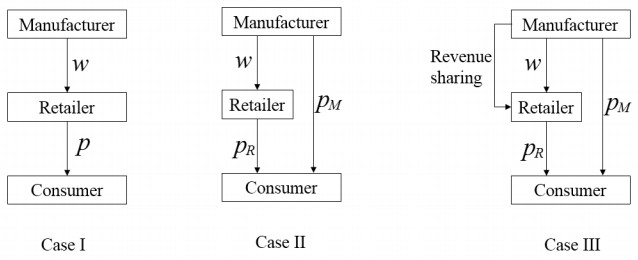
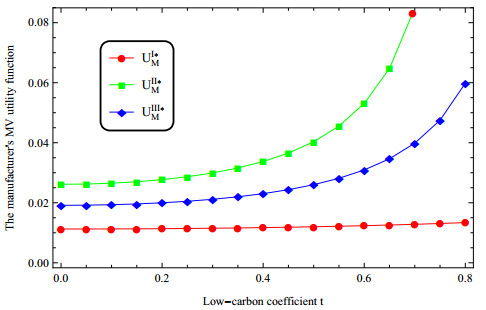
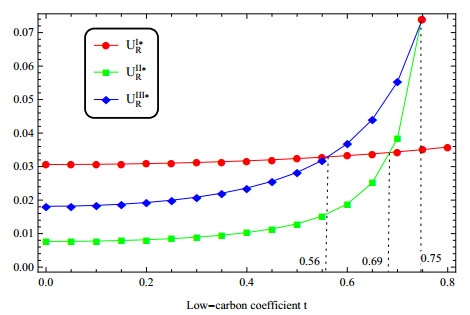
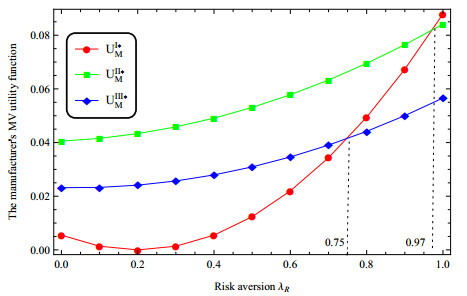

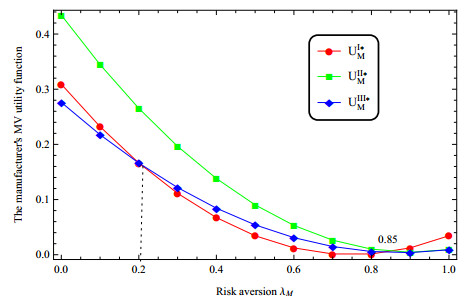
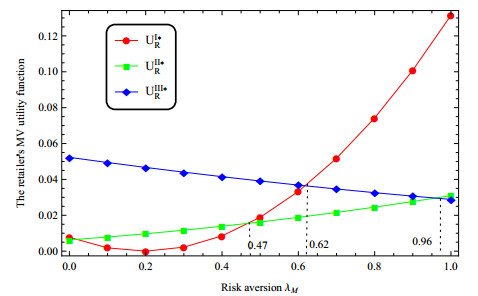


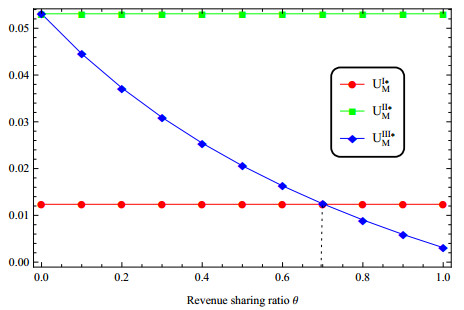
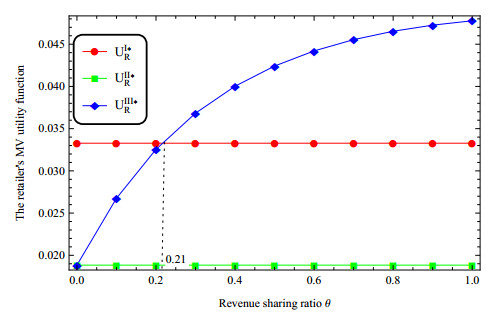


 DownLoad:
DownLoad: